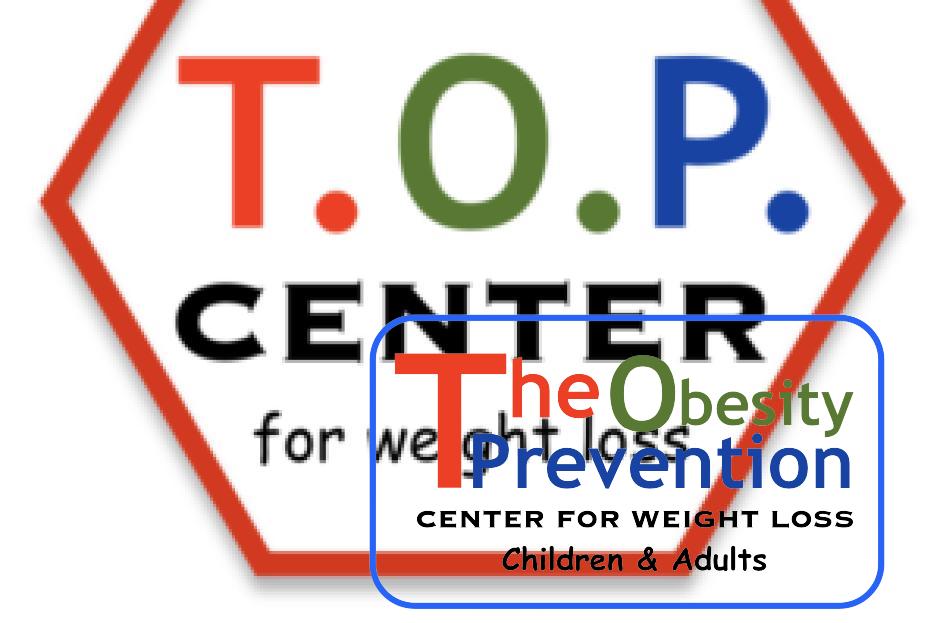The idea of losing weight and maintaining a healthy lifestyle through a Low Carb Diet has become a popular concept the world over. Nonetheless, the intricacies and specifics of this diet plan might still seem elusive to many, especially women who are keen to navigate through this diet’s potential benefits and occasional pitfalls. This composition provides an incisive understanding of the low carb diet and its principles, highlighting not only the science behind it but also how one can devise and adhere to a tailor-made diet plan. We uncover the essential foods and ingredients pivotal to a low carb diet’s success and navigate the typical challenges you might face, all while offering practical solutions to overcome them. Moreover, you will discover a host of flavorful recipes that exemplify how diverse and enjoyable a low carb diet can be.
Understanding the Low Carb Diet
Understanding the Low Carb Diet
Also known as a ketogenic diet, a low carb diet restricts the intake of foods rich in carbohydrates while enhancing the consumption of foods high in fat and protein content. This diet framework primarily revolves around swapping out high-glycemic, carbohydrate-laden foods such as fruits, grains, and some dairy products, for lower-tier, slow-burning energy sources like non-starchy vegetables, meat, and healthy fats.
Low Carb Diet and Weight Loss in Women
Low carb diets have proved highly effective in promoting weight loss for women. This diet plan encourages individuals to consume whole and nutrient-dense foods, which provide necessary nutrition and help control cravings, leading to sustainable weight loss. When carbohydrate intake is reduced, the body is forced to burn stored fat for energy instead of glucose, which triggers weight loss.
Science behind Low Carb Diet
At the core of the low carb diet is the process of ketosis, a metabolic state in which the body, lacking enough glucose for energy, burns stored fats instead. As a result, ketones are produced which are then used by the body for its energy requirements. Maintaining ketosis can lead to rapid and relatively sustainable weight loss compared to other diet plans.
Benefits of Low Carb Diet for Women
A low carb diet can bring about several potential benefits for women, particularly in relation to weight loss and overall health improvement. Low carb diets can support improved heart health by reducing levels of unhealthy cholesterol and triglycerides, thus decreasing the risk of heart disease. It can also help control blood sugar and insulin levels, beneficial especially for those with Type 2 diabetes. Additionally, a low carb intake can lead to modest reductions in blood pressure levels.
Drawbacks of Low Carb Diet for Women
While beneficial, a low carb diet can also pose certain challenges. Initially, the body may react to the low carb intake with symptoms like headaches, fatigue, and irritability, often referred to as the “keto flu”. Further, the emphasis on high protein intake may leave little room for dietary fiber, potentially leading to digestive issues. Long-term adherence to a low carb diet may also lead to nutrient deficiencies if not managed properly.
In achieving effective weight loss, one method that is proving highly successful for women is a properly planned and executed low carb diet. However, it’s crucial to keep in mind that before initiating any fresh dietary routines, it is always advisable to enlist the support of a health professional or to consult with a registered dietitian.

Creating a Low Carb Diet Plan
Digging Deeper into the Low Carb Diet
Fundamentally, a low carb diet involves restricting carbohydrate consumption, such as sugars, bread, and pasta, while increasing intake of protein-rich foods, fats, and nutritious vegetables. There isn’t just one type of low carb diet, but a range of approaches, and scientific research has consistently shown that they can lead to both weight loss and general health improvements.
Types of Low Carb Diets
Broadly, low carb diets can be categorized into four types: ketogenic (or keto), low-carb, high-fat (LCHF), low-carb, Mediterranean, and the Atkins diet.
Ketogenic Diet
Figuring among the most restrictive low-carb plans, the ketogenic diet primarily consists of fats (70-75%), moderate protein (20%), and very low carbohydrates (5-10%). It induces a metabolic state known as ketosis, where the body uses fat as its primary fuel source in place of glucose.
Low-Carb, High-Fat (LCHF) Diet
The LCHF diet is somewhat similar to the Keto diet but allows for a higher intake of carbs. It generally includes 60-70% fat, 20% protein, and about 10-20% carbs.
Low-Carb Mediterranean Diet
This dietary approach blends the Mediterranean diet’s principles with lowered carbohydrate intake. Healthy fats, such as those from fish, olives, and nuts, are higher, along with a moderate consumption of protein and low carb intake.
Atkins Diet
The Atkins diet is characterized by its four-phase approach: induction, balancing, fine-tuning, and maintenance. Carbs are gradually reintroduced after the first phase, though they still remain lower than the typical Western diet to maintain weight.
Choosing the Right Low Carb Diet
Depending on an individual’s dietary needs and body goals, the choice of low-carb diet varies significantly. For instance, individuals looking to lose weight rapidly might prefer a ketogenic diet, whereas someone seeking long-term health improvements may lean toward a low-carb Mediterranean diet.
Designing a Balanced Low Carb Diet
To design a balanced low carb diet that fosters weight loss, consider the following components:
- Fruits and vegetables with low starch content such as leafy greens, broccoli, bell peppers, zucchini, berries, tomatoes, cucumbers, and melons ought to form the base of your dietary plan.
- An adequate amount of lean proteins like fish, chicken, turkey, eggs, tofu, and legumes.
- Healthy fats from sources such as olive oil, avocados, nuts, and seeds.
- Integrate minimal whole grains like quinoa or brown rice within your carb limit.
- Incorporate dairy products in moderate quantities, for example, cheese or Greek yogurt.
- The primary beverages should be water and herbal teas.
As you embark on your journey with a low-carb diet, it is crucial to monitor your body’s reactions. You should observe health improvements, shifts in body composition, and changes in energy levels to measure the diet’s effectiveness. Always bear in mind that each body is distinct, hence, you might not get identical results as others. For personalized low-carb dietary plans, it’s prudent to seek advice from a nutritionist or dietitian. These experts can help align the plan to your dietary needs and weight loss ambitions.

Photo by louishansel on Unsplash
Essential Foods and Ingredients in a Low Carb Diet
Demystifying a Low Carb Diet for Women’s Weight Loss
Low carb diets have earned the reputation for being handy weight loss and health improvement tools. This dietary approach advocates for an intake reduction of carbohydrates, generally found in high quantities in sugary foods, breads, and pastas, while emphasizing greater inclusion of proteins, fats, and vegetables into your daily eating habits.
Essential Proteins
Protein acts as a key component of a low-carb diet due to its ability to keep you feeling full and increase your metabolic rate. Eggs, fish, meat, and dairy are excellent sources of high-quality protein. For instance, including a portion of lean chicken or turkey can deliver essential amino acids and nutrients without excess calories. Vegan or vegetarian women can consider plant-based proteins like quinoa, lentils, and tofu.
Healthy Fats
Contrary to popular belief, not all fats lead to weight gain. Monounsaturated and polyunsaturated fats are beneficial for heart health and can keep you satiated. Foods like avocados, olives, nuts and seeds, and fish like salmon and sardines are rich in these healthy fats.
Fiber-rich Vegetables
Non-starchy vegetables should dominate your low-carb diet. They add volume to meals without piling on the calories, helping you to feel fuller for longer. Cruciferous vegetables like broccoli, cauliflower, and Brussel sprouts, leafy greens like spinach, kale, and Swiss chard, and other veggies like bell peppers, zucchini, and eggplant are great low-carb options.
Beneficial Dairy
Choose dairy products that are high in protein and healthy fats while being low in carbs. Greek yogurt, cheese, and cottage cheese are among the best choices for a low-carb diet.
Nuts and Seeds
Nuts and seeds offer a powerful punch of protein, fiber, and healthy fats, making them a superb low-carb choice. Almonds, walnuts, flaxseeds, and chia seeds are top choices.
Berries and Other Low-Carb Fruits
Despite being naturally sweet, some fruits are relatively low in carbs and can be included in a low-carb diet. Berries are particularly good choices due to their high-fiber and antioxidant content. Other low-carb fruit options include peaches, plums, apricots, apples, oranges, and pears.
Embarking on a low-carb diet for weight loss as a woman involves focusing on consuming real, whole foods brimming with high-quality proteins, essential heart-healthy fats, a diverse selection of non-starchy vegetables, nuts, seeds, and a selected variety of fruits. More than achieving weight loss, adopting this dietary approach can contribute to curtailing hunger and improving overall health. Essential to remember is that weight loss and health go hand in hand with regular exercise and keeping your body adequately hydrated.

Typical Challenges and How to Overcome Them
A Closer Look at the Low Carb Diet and the Hurdles Women Might Encounter
It’s not unusual for women to pivot to a low carb diet in their pursuit of weight loss. This form of dietary approach necessitates a reduction in carbohydrate intake, while endorsing proteins and health-boosting fats. It further champions the consumption of whole foods, which ultimately results in the elimination of refined sugars and carbohydrates from your diet.
Experiencing Fatigue and Energy Lag
One common challenge experienced in the early stages of a low carb diet is a decrease in energy levels, often termed as the “keto flu”. This happens as your body adjusts to burning fat for energy instead of carbs. Drinking plenty of water, getting enough sleep, and eating plenty of low-carb, high-fiber vegetables can help accelerate this adaptation process.
Managing Carb Cravings
Learning to manage cravings for high-carb foods is another hurdle. It’s beneficial to have low-carb snacks on hand, such as nuts, cheese, or veggies with hummus, for those moments when cravings kick in. Moreover, training your mind to crave healthier options can also help. Healthy fats and proteins are proven to be more satiating, reducing the intensity of carb cravings over time.
Finding Diverse Meal Options
Meal variety can be a challenge while on a low carb diet. Creativity in the kitchen is essential to keep the diet interesting. Use low-carb substitutes like cauliflower rice instead of regular rice, or spaghetti squash in place of pasta. There are plenty of low-carb friendly recipes available online that can make meal planning exciting and delicious.
Maintaining Social Eating Habits
Maintaining social eating habits is a common challenge on a low-carb diet. Eating out or sharing meals with non-dieting family and friends might seem difficult. Communicate your dietary requirements when eating out, opt for salad with a protein, or eat a low-carb snack before you go out to curb your cravings.
Coping with Hormonal Changes
Women on low carb diets may experience hormonal changes. A low-carb diet can affect menstrual cycles and fertility, so consult a doctor before starting this diet if you plan on becoming pregnant. If you’re experiencing negative symptoms, consider working with a dietitian to adjust the macronutrient balance of your diet to better suit your body’s needs.
Achieving Success with a Low Carb Diet for Women’s Weight Loss
Achieving significant and sustainable weight loss through a low-carb diet often involves tackling multiple challenges head-on, particularly for women. This process requires thorough preparation, which includes researching low carb substitutes, crafting an efficient meal plan, stocking up on low carb snacks, and plugging into a supportive community. As your body transitions to its new diet, it’s crucial to remain patient and consult professionals for accurate guidance. Before embarking on a new diet—especially a low carb diet—it’s always recommended to ask for advice from your healthcare provider. Though a low carb diet can facilitate significant weight loss and has proved quite effective, it’s not suitable for everyone. Still, with consistent patience and unwavering dedication, it can serve as a practical avenue to weight loss.

Recipes and Meal Ideas for a Low Carb Diet
Understanding the Fundamentals of a Low Carb Approach for Women’s Weight Loss
For those willing to limit their intake of carbohydrates—largely present in sugary foods, pasta, and bread—a low carbohydrate (low carb) diet is an appropriate nutritional plan. This approach encourages consumption of proteins, healthy fats, and non-starchy vegetables instead. For women striving to lose weight, adopting this lifestyle has yielded promising results. A low carb diet functions effectively by suppressing appetite, enhancing metabolism, and triggering weight loss, even without deliberate calorie restriction.
Essential Elements of a Low Carb Diet for Women
A low carb diet for women should be filled with nutrient-dense, whole foods including lean proteins like chicken, turkey, and fish, healthy fats like avocados, olive oil, seeds, and nuts, and an abundance of non-starchy, fiber-rich vegetables. It’s crucial to focus on quality, choosing natural food sources over processed foods whenever possible.
Exciting Low Carb Breakfast Ideas
Starting your day with a low carb meal can set a positive tone for your eating habits all day. Scrambled eggs with a mix of vegetables such as bell peppers, onions, and tomatoes can be a filling, nutrient-dense choice. Greek yogurt topped with almonds and a handful of berries is another flavorful, low carb breakfast idea.
Delicious Low Carb Lunches
Incorporating salad into your lunch can be a bright and refreshing way to keep your meal low carb. Grilled chicken mixed greens salad with a vinaigrette can be a perfect lunch option. Additionally, lettuce wraps using lean turkey or chicken can offer a great substitute for traditional sandwiches.
Low Carb Dinners with Variety
Your evening meal on a low carb diet for women doesn’t need to be a monotonous affair. Experiment by grilling or baking several types of protein like fish or chicken, and pair these with roasted vegetables such as broccoli, cauliflower, or Brussels sprouts. If you’re a fan of pasta, substitute spaghetti squash or zucchini spirals to keep your meal both low carb and satisfying.
The Importance of Portion Sizes
While focusing on low carb foods, it’s crucial to remember that portion sizes still matter. Even healthy, low-carb foods can lead to weight gain if eaten in excessive amounts. Keeping mindful of portions can help to maintain your daily caloric requirements and assist with your weight loss goals.
Transitioning to a Low Carb Diet
Transitioning to a low carb diet for weight loss can be a rewarding journey with numerous delicious meal options. With proper planning, creative recipes, and careful portion control, a low carbohydrate diet can be flavorful, varied, and beneficial for women seeking weight loss.

Embarking on a low-carb diet serves as a journey of exploration and self-discovery, with the potential payoff of weight loss and improved health. The understanding of the low-carb diet and its core principles, creating a personalized diet plan, identifying essential low-carb foods and overcoming challenges are all essential milestones. Extract joy in exploring a wide array of delectable meals that are both low in carbs and high in savouriness. Remember, the journey to weight loss does not have to be a tasteless sacrifice. A low carb diet for women weight loss can be an exciting, flavorful adventure filled with delicious discoveries and profound benefits to your health.
Writio: Transform your website with high-quality AI content. This article was written by Writio.
Thank you for reading this post, don't forget to subscribe to our free newsletter
!
